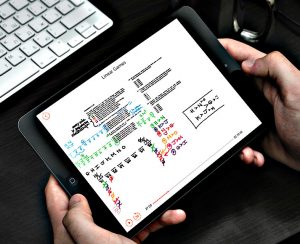The Case Against In-Class LSAT Prep Courses
Finally, there is a better way to prepare for the LSAT.
 For the past 25 years, dedicated students have sacrificed enormous financial resources and time to attend in-class test prep courses. For several generations of future lawyers, these in-class courses seemed the best — or even the only — way to prepare for standardized tests, including the all-important Law School Admission Test (LSAT).
For the past 25 years, dedicated students have sacrificed enormous financial resources and time to attend in-class test prep courses. For several generations of future lawyers, these in-class courses seemed the best — or even the only — way to prepare for standardized tests, including the all-important Law School Admission Test (LSAT).
But much has changed in the last few years. New and evolving technologies now offer students many alternatives to in-class LSAT prep courses. Are any of these alternatives as good as the traditional in-class options? For a variety of reasons, the answer is YES — indeed, these alternatives are often BETTER THAN their in-class counterparts.
Why?
In-class LSAT prep courses suffer from two overarching flaws: inconsistent quality, and rigidity. I have experienced each, both as an aspiring law student and as an in-class LSAT prep instructor.
1. Variance in Instructor Quality
In-class LSAT prep courses suffer from a crucial flaw — significant inconsistencies in the quality of instruction. Some major companies hire teachers who only scored between the 79th and 90th percentiles. Although other companies at least require a 98th percentile score on an actual LSAT, a high score on the LSAT is certainly not sufficient to guarantee quality instruction. Truly great instruction requires experience over time. Many in-class LSAT prep companies, however, experience high instructor turnover, and most of their instructors have no more than a few months of experience.
Moreover, many LSAT “naturals” — those individuals who were able to achieve a near-perfect score on the LSAT without much studying — are actually the worst instructors. Why? Because they simply cannot relate to the vast majority of LSAT students. Because they never struggled to grasp the LSAT, they cannot break down LSAT concepts in an accessible way for their students.
2. Set Schedules
In-class LSAT prep courses are also plagued by set, inflexible schedules. Students have to mold their schedules around the course, rather than optimizing their prep time in a manner that is most convenient for them.
This means that students juggling undergraduate courses or full-time employment must attend lengthy evening classes after a long day — not the best set-up for learning. Likewise, in-class courses are held in specific locations, which may require inconvenient and even lengthy commutes — again, not an optimal use of a student’s limited prep time and energy.
3. Teaching to the Mean
In addition to these logistical hurdles, in-class courses necessarily “teach to the mean.” This is because these courses must accommodate a wide range of students, each with differing strengths, weaknesses, and learning styles. It is impossible for in-class instructors to adjust their teaching styles or pace to suit every student.
In-class instructors must get through a set amount of lesson material in a predetermined amount of time, irrespective of the number of students enrolled or varying levels of student aptitude. There is simply no room for a more personalized approach to LSAT test prep.
4. Not Personalized
A related problem is the fact that limited in-class time means most students are unable to ask all their LSAT questions. Limited question-and-answer sessions leave many in-class LSAT students unable to get the guidance or clarification they need to improve.
Moreover, there is no way to adjust in-class courses to ensure that available class time is spent on those areas where each student most needs assistance. For example, an in-class course may involve two hours of Reading Comprehension instruction one evening. For a student who is doing well on Reading Comprehension, this time might be far better spent on Logic Games (i.e., Analytical Reasoning) or Logical Reasoning.
5. Limited Access
Last but not least: in-class courses (and even online LSAT prep courses) make key materials available to students for only limited periods of time. But for many students, more than eight or ten weeks is needed to adequately prepare for the LSAT — especially if students are juggling simultaneous school, work and/or family obligations. Ongoing access to prep materials is crucial, but in-class LSAT students are required to pay hefty fees to maintain their access to their prep materials.
The LSAT is a unique standardized exam in that it is not content-based. You cannot just memorize and regurgitate on the LSAT exam; rather, you have to learn specific reasoning skills and then develop the ability to execute those skills under intense time pressure.
The idea that a student should sign up for an LSAT course ten weeks before his or her target exam date is great from the perspective of the companies that stand ready to profit enormously by re-charging their students for continued access. But this is not an economical option for the vast majority of students, who may need more than two and a half months of study and practice to reach their target LSAT score.
Remember, the LSAT is by far the most important factor in law school admissions — given three to four times the weight of your undergraduate GPA! So how does it make any sense to spend four years on your GPA but only eight to ten weeks preparing for the LSAT test?
The good news is that LSATMax — an on-demand LSAT prep course available on mobile and the web — has solved all of aforementioned limitations that plague traditional LSAT prep courses.
LSATMax eliminates the variance in instructor quality by allowing great instructors to scale course content to individual students in ways that are impossible for brick-and-mortar classes.
And while LSATMax is a remote learning process, students are NOT alone. Students can ask questions on real-time message boards and their posts are answered by qualified, experienced LSAT instructors. No naturals and no rookies.
The platform also provides instant, detailed analytics highlighting strengths and weaknesses, giving students the personalized data they need to maximize their precious prep time.
Additionally, with on-demand content, LSATMax students can schedule their study time as convenient, which sidesteps the fact that life doesn’t start and stop at your convenience.
LSATMax is also the only LSAT prep class to offer lifetime access to all materials, because effective LSAT test preparation is a two-step process: first, students have to learn the strategies and methodologies necessary for success, and then they have to practice, practice, practice on as many real practice LSATs as possible (i.e., official LSAT PrepTests).
Lastly, by eliminating the needless overhead, LSATMax provides premium LSAT preparation to students at dramatically reduced prices.
Finally, there is a better way to prepare for the LSAT.
Download the free app from the Apple App Store or Google Play Store and visit www.testmaxprep.com/lsat to see for yourself.
 Mehran Ebadolahi graduated cum laude from Harvard Law School and he has been an LSAT prep instructor for over 12 years. He co-founded TestMax, Inc. by creating BarMax, a mobile-first bar exam review course, in an effort to disrupt a space that had long been a monopoly. He is now the CEO of the company and has dedicated his career to using technology to make standardized test prep more convenient, more affordable and more effective.
Mehran Ebadolahi graduated cum laude from Harvard Law School and he has been an LSAT prep instructor for over 12 years. He co-founded TestMax, Inc. by creating BarMax, a mobile-first bar exam review course, in an effort to disrupt a space that had long been a monopoly. He is now the CEO of the company and has dedicated his career to using technology to make standardized test prep more convenient, more affordable and more effective.







